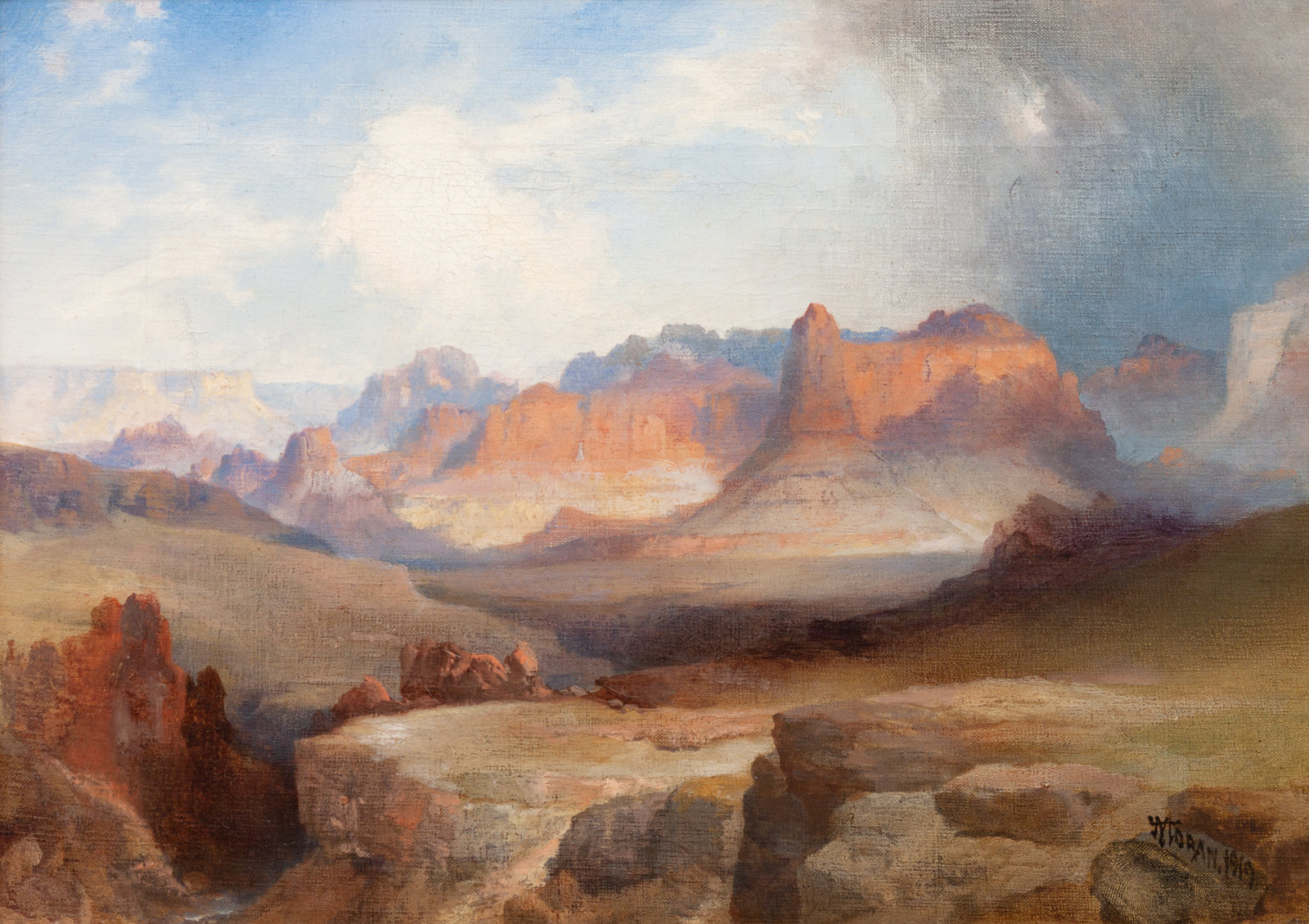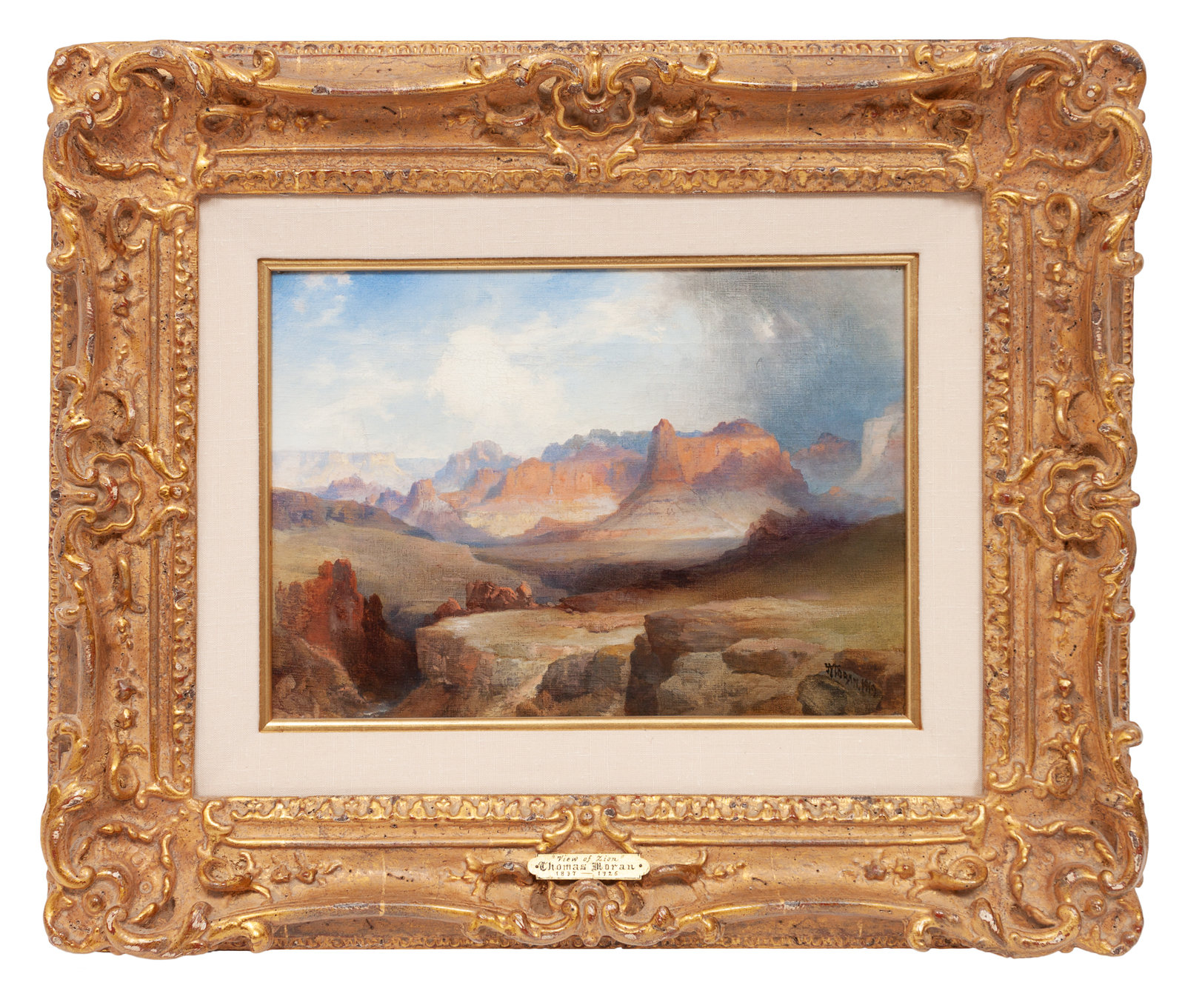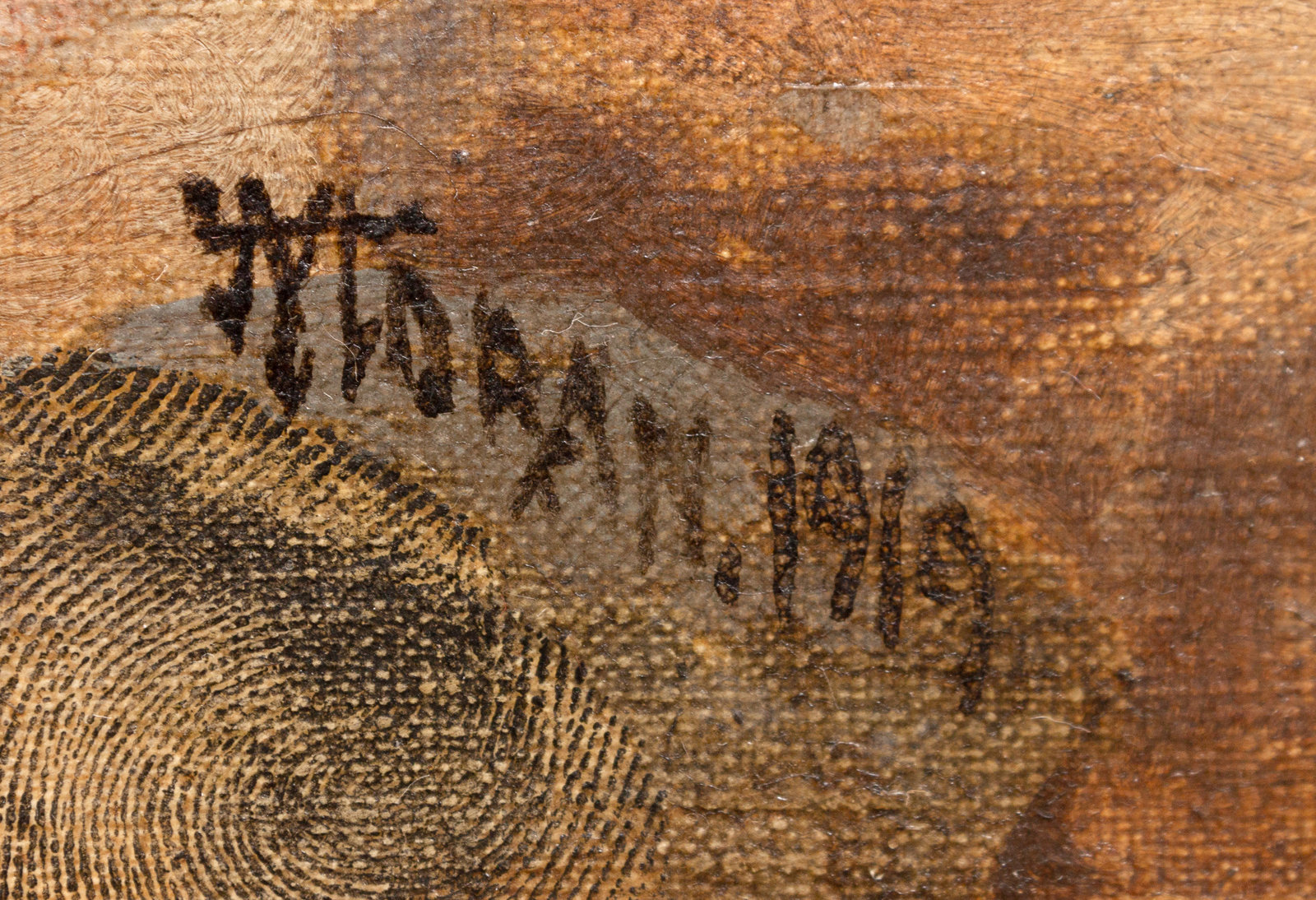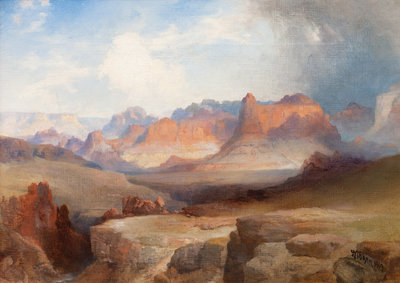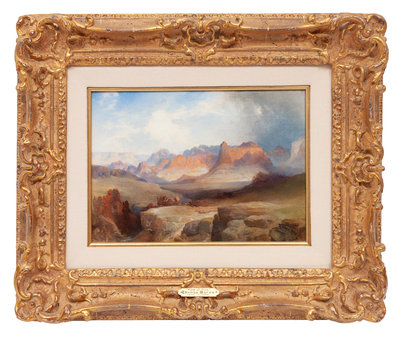Thomas Moran
(American, 1837-1926)
View of Zion
, 1919
Sale 951 - Western Art, including Contemporary Native American
Nov 4, 2021
10:00AM MT
Live / Denver
Estimate
$100,000 -
$200,000
Sold for $375,000
Sold prices are inclusive of Buyer’s Premium
Lot Description
Thomas Moran
(American, 1837-1926)
View of Zion
, 1919oil on canvas
signed T. Moran and dated (lower right)
10 x 14 inches
Property from the Collection of Homer E. Noble, Denver, Colorado
Provenance:
Saks Galleries, Denver, Colorado
This painting will be included in Phyllis Braff, Melissa Speidel Webster and Stephen Good's forthcoming catalogue raisonne of the artist's works.
Thomas Moran visited Zion, then in the Utah Territory, only once, in July, 1873, while on his way to join John Wesley Powell’s U.S. Geological Survey Expedition to the Grand Canyon. The artist would travel to and paint the Grand Canyon many times, often annually, but Zion was somewhat off the beaten path and not as readily accessible by train. Still, scenes from Zion in watercolor and oil punctuate Moran’s entire career. Moran’s onsite sketches and small watercolors of the Kolob and Zion Canyons, and photographs taken by expedition photographer John K. Hillers proved an ongoing wellspring of inspiration for the artist. It is as if Zion, for Moran, was at once a place and a kind of unfinished canvas in a recurring dream, one on which Moran could project and paint an inner vision, a dreamscape, as it were, of a remote, otherworldly West.
Under the influence of two giants of British art, painter J.M.W. Turner and philosopher and art critic John Ruskin, Moran never strove for fidelity to the scene in his landscapes. Echoing Turner and Ruskin, Moran averred, “I place no value on literal transcripts from Nature. My general scope is not realistic; all my tendencies are toward idealization… Topography in art is valueless.” Instead, from his earliest sketches in Utah—and everywhere else—Moran sought poetic interpretations. If poetry required the amendment or rearrangement of elements in the natural world, so be it. Art above all. Nevertheless, Moran’s interpretations were—and remain—crucial in the drive to capture the popular imagination of the West. With his engravings in periodicals of the day and the unparalleled Prang lithographs, one can ask, in all seriousness, “Would there be a National Park System without Thomas Moran’s visions of wilderness?”
Zion became Zion National Park, Utah’s first, in 1919. It was timely, and perhaps only natural, that Thomas Moran would paint View of Zion, 1919 to remember his time there and commemorate the occasion.
Aspects of many of his earlier renderings of Zion appear in the painting. The geological formation right of center recalls Moran’s watercolor, Coburn’s Butte, South Utah, 1873, while its shape and the river snaking at its foot harkens back to an 1874 Utah watercolor, Valley of Babbling Waters. The brume from the 1892 painting Mist in Kanab Canyon softens Moran’s palette and the oncoming storm at left and the shadows it casts hint at the drama of the monumental Grand Canyon canvases.
It is as if, just as those first sketches became paintings, those first paintings, in their turn, furnished the reference material for his aesthetic imagination in subsequent works. Paintings, rather than place, begat paintings. Once Zion becomes Thomas Moran’s Zion, a place filtered through his art, it becomes its own Zion to anyone and everyone who visits the park. You might say Moran’s Zion becomes America’s Zion.
View of Zion, 1919, painted just as place became park, is, however, unpeopled and all but devoid of vegetation save for the suggestion of mossiness in the shallow hill at right. Moran had once said, “Southern Utah is where Nature reveals herself in all her tumultuous and awe-inspiring grandeur…” one that “is worth going a long distance to see.” View of Zion, 1919 emerges, in the end, as a temptation to adventurous spirits, to a place that is both geographic and geological and yet, beyond geography and geology, a place in the mind’s eye when we are far from the wilderness, calling out to us, “Ollie ollie oxenfree, if you dare you might find me…”
- James D. Balestrieri
Condition Report
Overall good condition. No significant losses. Faint craquelure throughout, commensurate with age, most prominent in lighter pigments. One area of impact craquelure, just right of center, visible in raking light. UV light does not reveal any damage, repairs or inpainting. Vertical stretcher bar lines visible along right and left edges. Please request additional images. Framed dimensions: 19 3/4 x 23 1/4 inches
The physical condition of lots in our auctions can vary due to
age, normal wear and tear, previous damage, and
restoration/repair. All lots are sold "AS IS," in the condition
they are in at the time of the auction, and we and the seller make
no representation or warranty and assume no liability of any kind
as to a lot's condition. Any reference to condition in a catalogue
description or a condition report shall not amount to a full
accounting of condition. Condition reports prepared by Hindman
staff are provided as a convenience and may be requested from the
Department prior to bidding.
The absence of a posted condition report on the Hindman website or
in our catalogues should not be interpreted as commentary on an
item's condition. Prospective buyers are responsible for
inspecting a lot or sending their agent or conservator to inspect
the lot on their behalf, and for ensuring that they have
requested, received and understood any condition report provided
by Hindman.
Please email conditionreports@hindmanauctions.com for any additional information or questions you may have regarding this lot.
